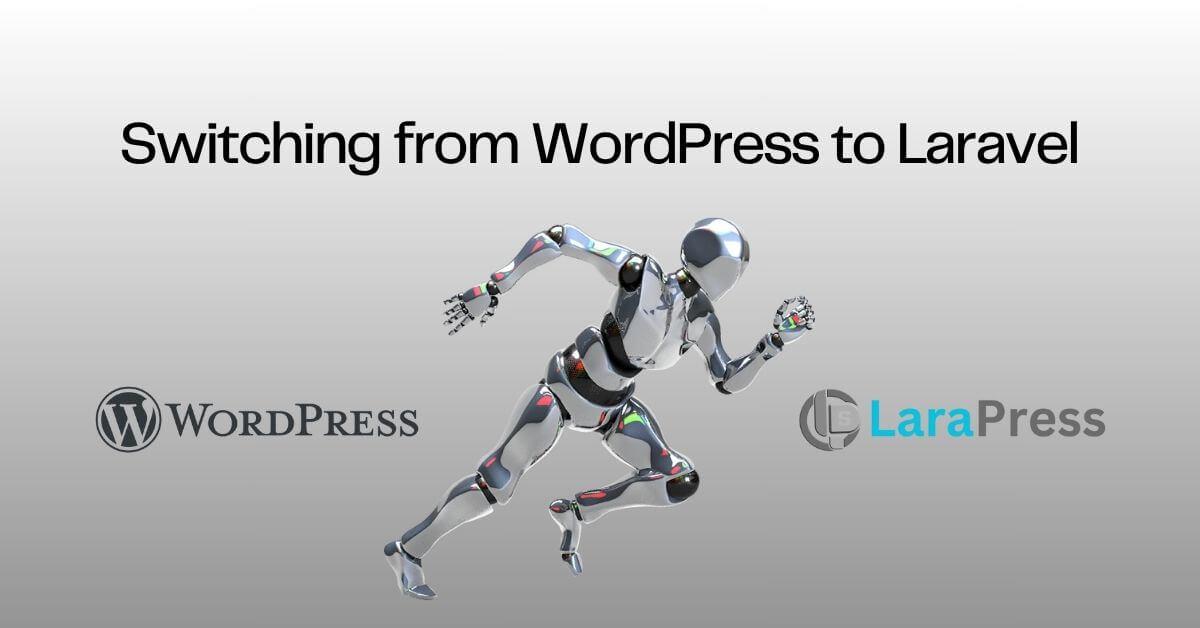
Like many developers and website owners, I started my journey with WordPress. Its ease of use, vast ecosystem, and massive plugin library made it the go-to platform for blogs, portfolios, and small business websites. But as my projects grew in complexity, I began to feel the limitations of WordPress.
That’s when I decided to make the switch to Laravel—and eventually developed LaraPress.org, a Laravel-based CMS designed for performance, scalability, and modern development.
Here’s my honest experience, what I learned during the transition, and why it might be time for you to consider switching too.
There’s no doubt WordPress is an incredibly powerful tool. However, over time, I ran into several recurring issues:
WordPress relies heavily on plugins, many of which are not optimized for performance. As my sites grew, load times increased—even with caching and optimization plugins in place.
With its global popularity, WordPress is a frequent target for attackers. Keeping the core system, themes, and dozens of plugins updated became a weekly chore. A single outdated plugin could compromise the entire site.
Almost every new feature required a plugin. Some plugins clashed with others, and a few were abandoned by developers. It became difficult to manage updates without risking bugs.
When I started building more custom features—like APIs, dashboards, or dynamic data management—WordPress started to feel like a restriction. I needed more control over the backend and database structure.
Laravel is a modern PHP framework designed for developers who want flexibility, speed, and control. Its elegant syntax, built-in features (like routing, caching, and database migrations), and active community made it the perfect next step.
Here’s what stood out to me:
MVC Architecture: Clear separation between logic and views.
Blade Templating Engine: Lightweight, clean, and developer-friendly.
Artisan CLI: Time-saving tools for migration, seeding, and scaffolding.
Security: Built-in CSRF, XSS, and SQL injection protection.
RESTful API support: Perfect for headless or mobile-first applications.
After mastering Laravel, I built LaraPress.org to provide the simplicity of a CMS like WordPress with the power of Laravel under the hood.
Clean admin dashboard for managing content, media, and users.
API-first architecture, making it easy to go headless.
Modular system that allows developers to extend functionality cleanly.
Built-in SEO controls, caching, and modern UI support.
Security-first approach with role-based access controls.
LaraPress.org is not just a CMS—it’s a framework for developers who want freedom without reinventing the wheel.
Migrating from WordPress to Laravel isn’t just about copying content—it’s rethinking how your site is structured. I spent time designing database schemas, planning routes, and mapping content types.
Unlike WordPress, Laravel doesn’t come with drag-and-drop solutions out of the box. But that’s a good thing. Every feature is custom-tailored to your needs, and you’ll write cleaner, more efficient code.
If you're not familiar with MVC frameworks or PHP, Laravel has a learning curve. But once you’re past that, the possibilities are endless.
Switching from WordPress to Laravel was one of the best decisions I made for my development journey. It gave me the flexibility to build complex, high-performance websites without plugin bloat or security headaches.
If you're a developer or a growing business looking for a modern alternative to WordPress, LaraPress.org offers the perfect balance—user-friendly CMS functionality built on a robust Laravel foundation.
Make the switch. Your future projects will thank you.